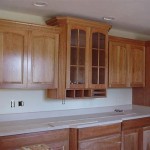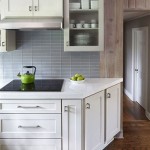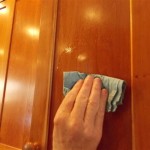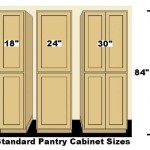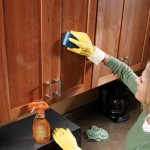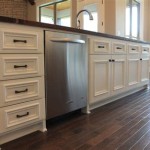How To Repair Chipped High Gloss Kitchen Doors
High gloss kitchen doors offer a sleek, modern aesthetic. However, their pristine finish can be susceptible to chipping, exposing the underlying material and detracting from their overall appearance. Addressing these chips promptly prevents further damage and maintains the kitchen's aesthetic integrity. This article outlines effective methods for repairing chipped high gloss kitchen doors.
Assessment and Preparation
Before initiating any repair, the extent of the damage must be assessed. Minor chips, affecting only the top layer of gloss, can often be addressed with simple filling techniques. Deeper chips, exposing the substrate material, require a more involved approach. The area surrounding the chip should be cleaned thoroughly with a mild degreaser and soft cloth to ensure proper adhesion of repair materials. Loose fragments of the high gloss finish should be carefully removed, avoiding further damage to the surrounding area.
Repairing Minor Chips
Minor chips can be effectively repaired using a high gloss touch-up paint or filler. Selecting a product that precisely matches the door's color is crucial for a seamless repair. A fine-tipped artist's brush allows for precise application of the touch-up paint or filler. Multiple thin coats are preferable to a single thick coat, allowing each layer to dry thoroughly before applying the next. Once the final coat is dry, the repaired area can be gently buffed with a very fine grit sandpaper (2000 grit or higher) and polishing compound to achieve a smooth, even finish.
Repairing Deeper Chips
Deeper chips require a multi-stage repair process. The exposed substrate should be filled with a suitable wood filler or epoxy resin, carefully shaping it to match the contour of the door. Allowing ample drying time is essential before proceeding. Once the filler is completely dry, it should be sanded smooth, blending it seamlessly with the surrounding surface. The filled area should then be primed to ensure proper adhesion of the topcoat. A high gloss paint, matching the door's original finish, should then be applied in thin, even coats. Again, allowing each coat to dry completely before applying the next is critical.
Advanced Repair Techniques for Significant Damage
For significant damage or extensive chipping, professional refinishing may be the most effective solution. This process typically involves stripping the existing finish, repairing any underlying damage, and then applying a new high gloss topcoat. While this option requires more investment, it can restore the doors to their original pristine condition.
Tools and Materials
Several tools and materials are essential for successful high gloss door repair. These include:
- Mild degreaser
- Soft cloths
- Fine-tipped artist's brush
- High gloss touch-up paint or filler
- Wood filler or epoxy resin
- Fine-grit sandpaper (2000 grit or higher)
- Polishing compound
- Primer
- High gloss paint
Prevention of Future Chipping
Taking preventative measures can minimize the risk of future chipping. Avoid slamming the doors and exercise caution when moving objects around the kitchen. Protective bumpers can be installed on door edges and corners to absorb impact. Regular cleaning with a gentle, non-abrasive cleaner can maintain the integrity of the high gloss finish. Promptly addressing any minor chips can prevent them from developing into more significant damage.
Color Matching Considerations
Precise color matching is crucial for achieving an invisible repair. When selecting touch-up paints or fillers, it is recommended to test the color on an inconspicuous area of the door first. Factors such as lighting conditions and the age of the existing finish can influence color perception. Consulting paint professionals or contacting the door manufacturer can assist in obtaining an exact color match.
Safety Precautions
When working with repair materials, always ensure adequate ventilation. Wear appropriate protective gear, such as gloves and eye protection. Follow the manufacturer's instructions carefully for safe handling and application of all products. Dispose of used materials responsibly in accordance with local regulations.
Professional Consultation
While many minor chips can be addressed through DIY methods, complex or extensive damage may necessitate professional intervention. Consulting a furniture repair specialist or a professional refinisher can ensure a high-quality, long-lasting repair. Professional expertise can be particularly valuable for matching complex finishes and addressing structural damage.

Scratched And Chipped Kitchen Cabinet Doors Refinishing Touch

Scratched And Chipped Kitchen Cabinet Doors Refinishing Touch
Repair Glossy Kitchen Cabinet Door Diynot Forums

Damaged Gloss Foil Kitchen Cabinet Door Houzz

How To Repair Ling Veneer On Particle Board Cabinets Handhills

How To Touch Up Chipped Cabinet Paint

My Laminate Drawers And Doors Are Ling Ing Help Hometalk

How Do I Fix These Cabinet Doors Hometalk

How To Touch Up Chipped Cabinet Paint

Cabinet Door Finish Failure Diagnosis And Repair
Related Posts

